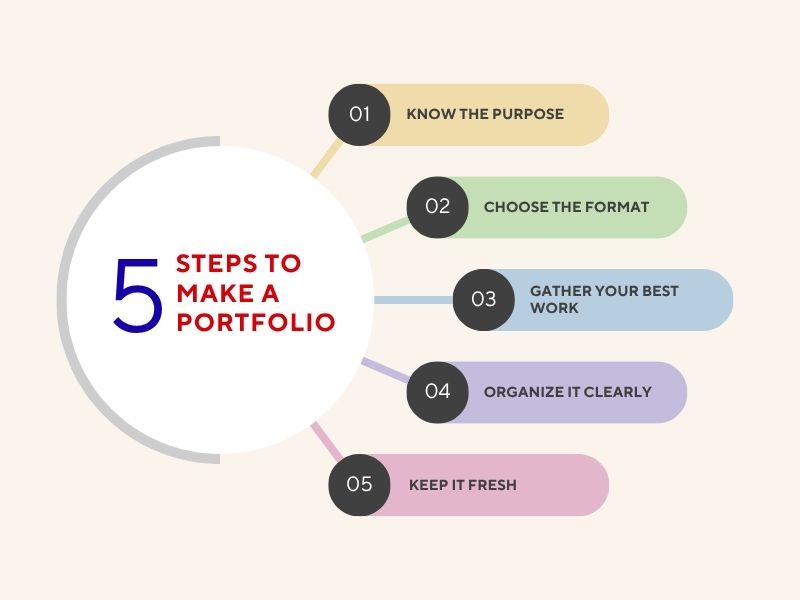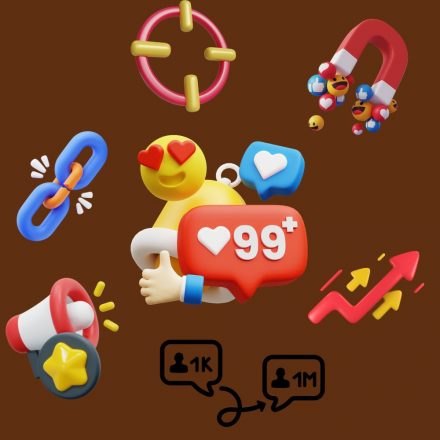The word portfolio gets thrown around a lot. At first glance, it might sound like something only artists or investors use. But in reality, it’s for everyone. A portfolio is simply a collection of work that shows off skills, talent, or progress over time.
Imagine a folder filled with your best efforts, whether that’s school assignments, websites, videos, or job achievements. That’s a portfolio. It helps tell a story about what someone can do, and it often speaks louder than the story.
From students building classroom projects to professionals applying for jobs, portfolios play a major role in standing out. They’re like a personal museum, organized, visual, and meant to impress.
So, whether the goal is to land a job, pass an interview, or just keep track of growth, a portfolio is the perfect way to showcase it all. And building one? Much easier than it sounds.
What Does “Portfolio” Mean?
At its core, a portfolio is a collection. Not of stamps or coins, but of work, ideas, or achievements. It brings everything together in one place to show what someone is capable of doing.
The word itself comes from Italian “portafoglio,” which means a case for carrying papers. Over time, it evolved to mean a bundle of someone’s best work or responsibilities.
In school, a student might create a portfolio to showcase projects. In business, it could mean a group of investments. And in the creative world, it often includes designs, videos, and written content.
No matter the field, a portfolio gives proof. It shows, not just tells. And that’s why it’s so powerful. It’s evidence that skills aren’t just claimed; they’re demonstrated.
What is the Purpose of a Portfolio?
A portfolio isn’t just a fancy collection; it has a purpose. It helps people show what they’ve done, how they think, and what they’re good at. Instead of just saying “I can do this,” a portfolio proves it.
For students, it highlights learning and creativity. For job seekers, it’s a silent pitch to employers. And for freelancers or creators, it works like a storefront displaying their best work to attract clients.
It also shows growth over time. Looking back at past work in a portfolio can reveal progress, lessons learned, and skills gained. It becomes a personal timeline of improvement.
Most importantly, a portfolio builds trust. Whether in an interview or on a website, it gives others a reason to believe in someone’s abilities without needing a long explanation.
Types of Portfolios
Portfolios come in many forms, each tailored to its purpose. From students to professionals, the right type of portfolio helps showcase skills, progress, and potential in the best light.
Let’s explore the most common types and how each one plays a unique role.
Portfolio of Students
In classrooms, a portfolio helps students collect their best work. It might include essays, art, science experiments, or even photos of hands-on projects. It shows what they’ve learned and how they think.
Teachers often use student portfolios to track progress. It’s not about perfect results; it’s about improvement and creativity. Plus, students feel proud when they see how far they’ve come.
Portfolio for Interview
Walking into an interview with a solid portfolio can change the game. Instead of just talking about skills, candidates show them. It can include case studies, past work, or project snapshots.
Even a simple layout with clear examples gives hiring managers something real to look at. It helps the conversation flow and leaves a lasting impression.
Portfolio for Job Application
Some jobs now expect a portfolio alongside a resume. Whether applying for a design role or a data job, a portfolio gives extra proof of ability.
It doesn’t have to be huge. Just a few well-chosen pieces of work can speak volumes. It’s quality that matters, not quantity.
Portfolio for Web Developer
For web developers, the portfolio is often a website. It may feature live demos, GitHub links, or screenshots of past work.
This kind of portfolio should highlight both coding skills and user-friendly design. Clean layout, working links, and a bit of personality go a long way.
Portfolio for Video Editor
A video editor’s portfolio usually comes as a reel. That means a short, punchy video showing their editing style, effects, and storytelling.
It helps clients or employers get a quick feel for what the editor can do: fast cuts, smooth transitions, or color grading magic.
Portfolio for Data Analyst
In this field, numbers tell the story. A portfolio might include dashboards, data reports, or case studies using tools like Excel, Python, or Tableau.
It’s all about how well someone can gather, clean, and present data in a way that makes sense. A clean, readable format always helps.
How to Do Portfolio Management?
Managing a portfolio isn’t just for finance experts; it’s a skill anyone can learn. Whether the goal is long-term growth, saving for retirement, or building wealth steadily, portfolio management helps turn financial decisions into a well-planned strategy.
Here’s how to do it effectively, step by step:
1. Define the purpose
Start by setting clear financial goals. Whether saving for a home, retirement, or passive income, the purpose will shape every choice in the portfolio.
2. Know your risk tolerance
Some people are comfortable taking big risks for higher returns. Others prefer slow and steady. Understanding personal risk limits helps create a balanced investment mix.
3. Choose the right asset allocation
Divide the portfolio between assets like stocks, bonds, or real estate. A smart mix protects against losses while allowing growth.
4. Diversify
Don’t put all your eggs in one basket. Spread investments across industries and asset types to reduce risk.
5. Review and rebalance regularly
Markets change. A well-managed portfolio is checked often and adjusted to stay aligned with goals and risk levels.
With discipline and a clear plan, portfolio management becomes a long-term strategy, not just a financial guess.
How to Make a Portfolio?
Creating a portfolio might sound tricky, but it’s easier than expected. It just takes a bit of planning, the right content, and a touch of creativity.

Here’s a step-by-step guide anyone can follow:
- 1. Know the purpose
Start by asking what the portfolio is for. A job? A class? A freelance gig? Knowing the goal helps shape what to include.
- 2. Choose the format
Decide if the portfolio will be digital (like a website or PDF) or physical (a binder or printed book). For most careers today, a digital portfolio works best.
- 3. Gather your best work
Select pieces that show skill, creativity, and results. Quality matters more than quantity. Pick work that tells a story that fits the purpose of the portfolio.
- 4. Organize it clearly
Group content into sections of projects, skills, achievements, or case studies. Use short descriptions to explain what each item is and why it matters.
- 5. Keep it fresh
A portfolio isn’t a one-time task. Update it often with new work or skills, especially before interviews or job applications.
A good portfolio doesn’t just show what’s been done, it shows what’s possible.
Conclusion
A portfolio is more than just a collection; it’s a reflection of hard work, growth, and potential. Whether it’s for school, a career, or managing investments, it plays a powerful role in telling a personal or professional story.
Building one doesn’t require fancy tools or endless hours. With clear goals, thoughtful content, and regular updates, anyone can create a portfolio that truly stands out.
In classrooms, it helps students shine. In interviews, it gives candidates an edge. And in creative or tech fields, it can open doors to exciting new opportunities.
So, whether designing a website, editing videos, analyzing data, or preparing for a big job application, a strong portfolio might just be the key that unlocks the next big step.
FAQs
1. What does portfolio mean?
A portfolio is a collection of work samples that showcase skills, achievements, and experience.
2. Why is a portfolio important?
It highlights expertise, builds credibility, and helps attract clients or employers.
3. What are the main types of portfolio?
Professional, academic, creative, and digital portfolios are the most common.
4. How can I make an effective portfolio?
By organizing your best work, adding case studies, and presenting it visually.
5. Can a digital portfolio boost career opportunities?
Yes, an online portfolio increases visibility and makes sharing work easier.


















Leave a Comment